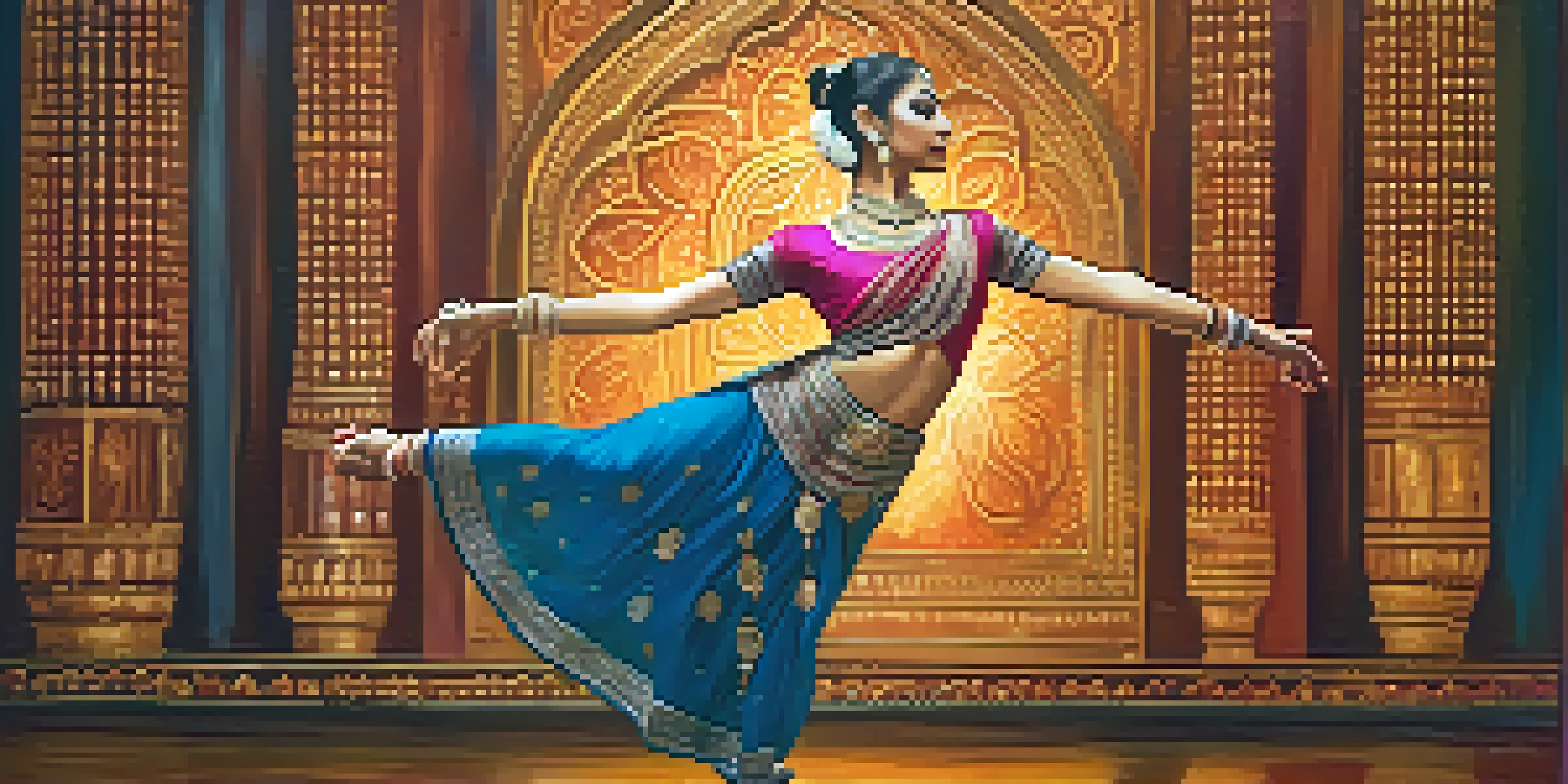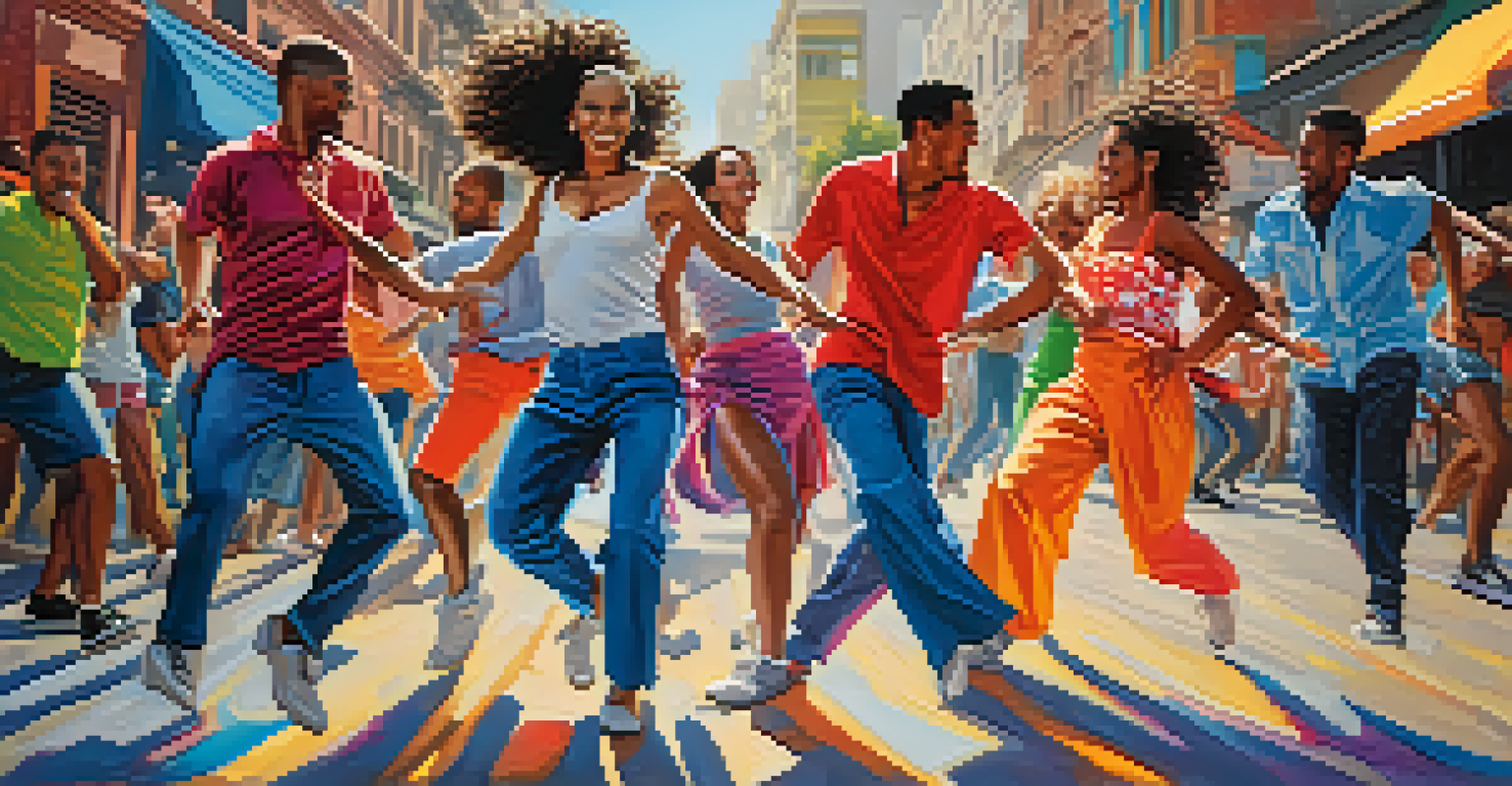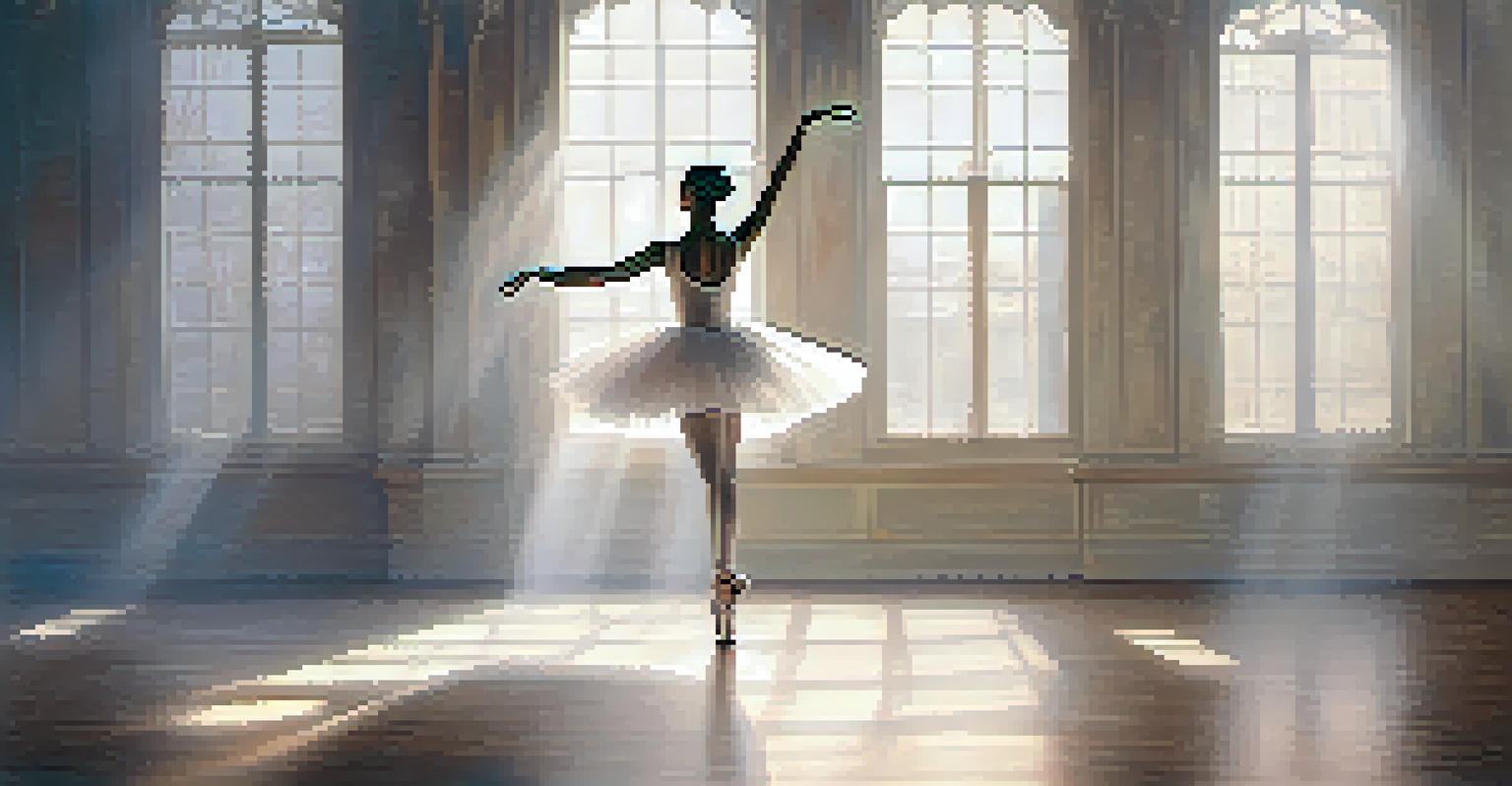Music and Dance: The Interconnected Art Forms

The Fundamental Bond: Rhythm and Movement
At the heart of both music and dance lies rhythm. This shared element acts as a pulse that guides movements and melodies, creating a seamless flow. Just as a heartbeat provides life to a body, rhythm energizes both dancers and musicians, inviting them to express emotions.
Dance is the hidden language of the soul.
For instance, think about how a dancer responds to a lively beat. Their body naturally moves in sync with the music, showcasing a physical interpretation of sound. This interplay between sound and movement highlights how rhythm can evoke feelings and tell stories in a captivating way.
Ultimately, the connection between rhythm and movement enriches both music and dance, allowing artists to explore their creativity and communicate with their audience on a deeper level.
Cultural Expressions: Dance Styles Around the World
Dance is often a reflection of cultural identity, with various styles emerging from different regions and traditions. From the vibrant salsa of Latin America to the delicate ballet of Europe, each dance form encapsulates unique stories and values. This diversity not only enriches the art forms but also fosters appreciation for different cultures.

Take, for example, the traditional Indian dance form Bharatanatyam. It combines intricate footwork, expressive facial gestures, and specific music, creating a storytelling experience that resonates deeply within its cultural context. Such dances not only entertain but also educate audiences about their historical and social backgrounds.
Rhythm: The Pulse of Dance and Music
Rhythm serves as a vital connection between music and dance, energizing performers and enabling emotional expression.
By exploring these diverse dance styles, we can better understand how music and dance serve as universal languages that transcend boundaries, bringing people together through shared experiences.
The Emotional Connection: Music's Influence on Dance
Music has an incredible ability to evoke emotions, which in turn influences how dancers express themselves. A slow, melancholic piece can inspire graceful movements, while an upbeat track might prompt energetic choreography. This emotional connection enriches the performance and allows audiences to resonate with the art.
Music can change the world because it can change people.
Consider a contemporary dance piece set to a haunting melody. The dancer’s movements may reflect feelings of longing or nostalgia, drawing the audience into a shared emotional experience. This powerful synergy between music and dance creates a captivating narrative that captivates hearts and minds.
In this way, music becomes a tool for dancers, allowing them to channel their emotions and connect with their audience on a profound level.
Collaborative Creativity: Musicians and Dancers Unite
The relationship between musicians and dancers is often a collaborative one, with each art form enhancing the other. When they come together, they create a dynamic synergy that elevates their performances. This partnership not only showcases their individual talents but also reinforces the interconnectedness of music and dance.
For instance, think about a live performance where a jazz band plays while a group of dancers improvises. The musicians may adjust their tempo based on the dancers' movements, creating a unique experience that is different each time. This fluidity highlights the spontaneity and creativity that flourishes in collaborative settings.
Cultural Diversity in Dance Styles
Different dance forms around the world embody unique cultural identities, enriching the art and fostering appreciation for diversity.
Ultimately, such collaborations serve as a reminder that the arts are not isolated; they thrive on interaction and shared creativity, enriching the cultural landscape.
Historical Perspectives: The Evolution of Music and Dance
Throughout history, music and dance have evolved together, often reflecting societal changes and technological advancements. From folk dances that celebrate community events to the rise of modern dance styles influenced by contemporary music genres, the evolution of these art forms tells a fascinating story of cultural progression.
Consider the influence of the 20th century's jazz age on dance. Styles like the Charleston emerged, reflecting the upbeat, carefree spirit of the time. This historical lens helps us appreciate how music and dance are intertwined with the social fabric of their respective eras.
By understanding this evolution, we gain insight into how music and dance continue to adapt, thrive, and remain relevant in our ever-changing world.
The Role of Technology: Enhancing Music and Dance
In today's digital age, technology plays a significant role in shaping how music and dance are created and experienced. With tools like music production software and dance choreography apps, artists can experiment and innovate their craft like never before. This technological embrace opens new avenues for creativity and collaboration.
For instance, think about the rise of social media platforms like TikTok, where users create dance challenges set to popular songs. This phenomenon not only showcases emerging trends but also unites people globally as they participate in these viral dances. Such interactions highlight how technology can amplify the connection between music and dance.
Music and Dance Enhance Mental Health
Engaging with music and dance can significantly boost mental health by providing emotional expression and therapeutic benefits.
As we move forward, it's exciting to see how technology will continue to influence these art forms, making them more accessible and engaging for everyone.
The Impact of Music and Dance on Mental Health
Engaging with music and dance can have profound effects on mental health, serving as powerful tools for expression and healing. Whether it's dancing to a favorite song or playing an instrument, these activities can boost mood and reduce stress. For many, they provide an escape and a way to connect with their emotions.
For instance, dance therapy has emerged as a recognized form of treatment for various mental health issues. By combining movement with music, individuals can express feelings that might be difficult to articulate, facilitating personal growth and healing. This therapeutic aspect reinforces the idea that music and dance are not just art forms but also essential components of well-being.

In this way, music and dance become more than just creative outlets; they transform into vital practices that promote mental health and emotional resilience.